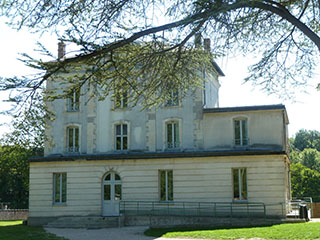Prochain point :
Carrières et four à chaux
Prochain point : lat="49.1652" lon="1.84776"

Le Camp de César (Caesar’s Camp)
A fortification from Celtic times to the High Middle Ages
A sophisticated structure...
The archaeological site on the outcrop of "Caesar’s Camp" is a high rampart built on the steep end of the limestone plateau formed by two converging valleys. A wide ditch slices through the ground along a distance of 150 meters, cutting the plateau from north to south into a fan-like concave shape. Behind the ditch, a five- metre wide rampart wall was built with dense hard limestone rocks, consisting of two facing lines, filled in with nested blocks in a "fish scale" formation. There is a series of construction ramps on the inner embankment used to convey the monumental limestone blocks.
... For purposes that are still largely unknown
Archaeological excavations have dated this rampart to the Celtic era (around the fifth century BC). Its function is still the subject of debate. The fact that there are no traces of human occupation suggests that the place had a symbolic function. Iron age man is thought to have respected it as a Neolithic burial site, as evidenced by the skull remains (- 5000 BC) and burial vaults.
Archaeologists have demonstrated the complete absence of construction or occupancy by the Gallo-Romans. Julius Caesar did not come to Nucourt! The site saw three phases of major wall reconstruction between the second half of the tenth and early eleventh century. The Carolingians may have occupied the site for defence purposes in the ninth century. It is easy to understand the desire to maintain an extra fortress, strategically located near the border between French Vexin and Norman Vexin, as conflicts still existed even after the Treaty of Saint-Clair-sur-Epte in 911.





